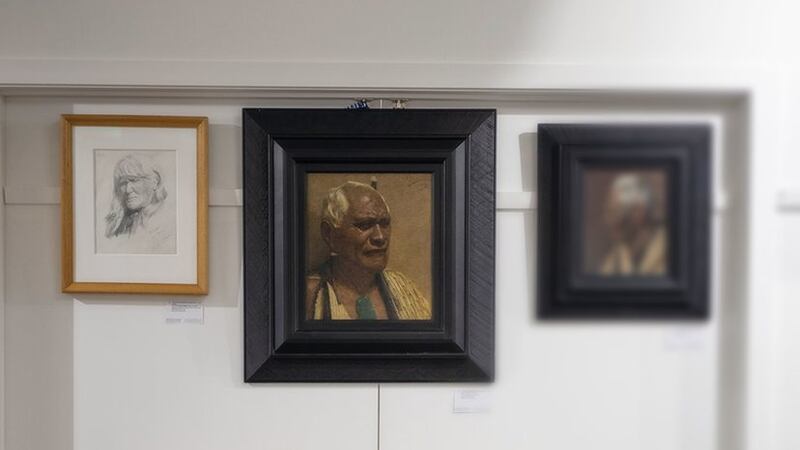An auction that will see some works by top artists go under the hammer include three of New Zealand artist Charles Frederick Goldie’s work.
International Art Centre director Richard Thomson says it’s exciting to have “three well-provenanced works in good condition”.
The three paintings of rangatira Māori include a portrait of an unknown chief painted and signed in 1939, a work on Wharekauri Tahuna painted in 1918 and a sketch of Māori tour guide Sophia Hinerangi, who was a tourist guide of the Pink and White Terraces at Lake Rotomahana in Rotorua.
"[The Hinerangi drawing] was a beautiful drawing that was owned by the artist's niece up until 2017. We sold it to a Rotorua collector and it has since formed part of a state collection."
The Tahuna painting is expected to be priced from $600,000 to $900,000, though Thomson says similar pieces have gone under the hammer for almost $1.4 million.
“The market dictates the value of these paintings.
More Goldie art pieces go up for auction.
Goldies 'mostly not exported'
“I have put up Goldie paintings before and they’ve sold anywhere from $400,000 right up to $1.75 million. Generally, the larger works will fetch a premium, and ones that haven’t been seen before that have come out for sale for the first time in decades obviously attract the attention of collectors too.”
Goldie was the most prominent portrait artist of rangatira Māori in his time over 100 years ago, having spoken fluent Māori, and using his art studies learned in Paris, France. Thomson says Goldie may be New Zealand’s most famous painter internationally.
“He captured these beautiful Māori portraits that are sought after all over the country and beyond but, for the most part, they’re not exported.
“I think the last time we had three Goldies up for auction was 2018 when we sold Dame Kiri Te Kanawa’s collection. Every now and then we’ll get two Goldies but to have three is quite significant and exciting because it brings lots of viewers to these beautiful pieces.”


